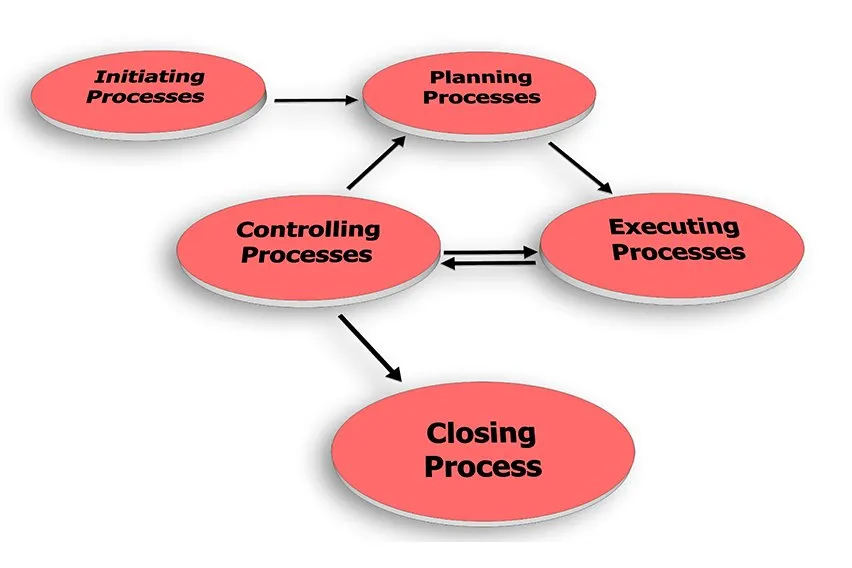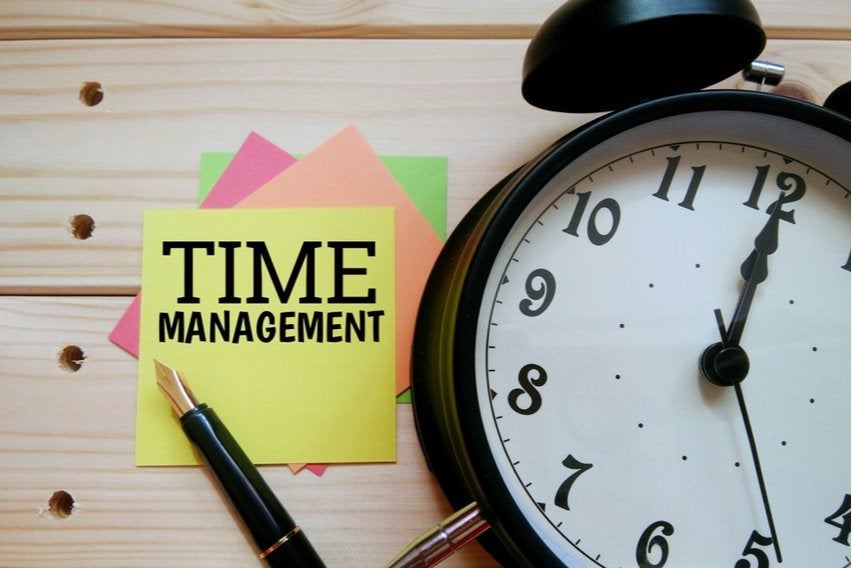The 5 Project Management Phases Explained

Project management can be a difficult and stressful process.
When you have to handle the client’s demands on top of managing a team, it can easily get on top of you.
So how do you handle managing a successful project?
One way to tackle a daunting project is to break it down into manageable phases, each with its own project goals and deadlines. It’s far easier to manage smaller chunks of work than trying to take on the whole project at once.
There are classically five phases of project management. Let’s take a look at what they are.
Here’s What We’ll Cover:
4. Project Performance & Monitoring
1. Initiation Phase
The first of the project phases is the process of turning an idea into a goal.
This is the stage where you sit down and define the entire project that you want to complete.
You’ll set the project goals, the cost estimate, the project deliverables and identify the people that you want to be involved in the process. This will create your ‘project team’.

This is also where you will typically create a project charter.
A project charter is a short document that explains the project that you’re setting out to do in a clear and concise way. This tends to be delivered to upper management or the client so they can get an overview of what you’re setting out to do and how you’ll achieve it.
2. Project Planning
This step is one of the key components to any successful project.
Once you’ve got a broad understanding of what it is you want to achieve, you’ll want to concentrate on the minutia.
In the planning phase, you will want to create a comprehensive project plan. In this plan, you will collate and combine the individual plans for cost, duration, communication and risk management.
The planning stage is most likely to take up the most time. If a plan is well thought out and comprehensive, it will make every stage of the process ten times easier. Even the most complex project can be made to look far simpler with a good plan.
3. Project Execution
The third stage is where you and your team will carry out the plan that you’ve put together.
It’s common for project managers to preface this stage with a meeting. Here you will remind the team of the project objectives and make sure everybody knows their responsibilities.
There will be a huge amount of work going on. But it’s up to you to make sure everybody in the team is aware and informed of their responsibilities. If the team is being led with confidence and clarity, then it should be a smooth process to be a part of.
4. Project Performance & Monitoring
This is a vital step that happens alongside the execution stage.
As a project manager, during this stage, you should be checking in with each team to make sure they’re keeping to the plan. You should also be available to give support and encouragement to help keep morale high to keep the project on track.
It’s important to remind your team to stick to the original goals. Things can go awry if people try to deviate from what was agreed.
However, it’s also important to be open to feedback and change. Sometimes, unsuspected problems may occur and it is impossible or far more difficult to stick to the original plan.
If this happens, it’s important to keep calm and revisit the plan to see if it can be adapted.

5. Project Closure
This phase represents the completion of the project.
When the project is done and dusted, it’s important as a project manager to recognize the hard work and value of the project team.
Once the project is complete, it’s important to hold a meeting to analyze and evaluate what went well. You can also identify any failures or ways to improve for future projects.
It’s also quite common to organize a small work event for the employees involved which is a great way to recognize the effort and keep morale high.
As the project manager, there are still some tasks left to be done.
These can include creating a “post mortem” project report for upper management. In this project documentation, you will break down the finished project and collect all of the documents. It’s also a good place to list each major deliverable that was achieved.
You can list anything that wasn’t completed, show the project budget and any extra costs.
Key Takeaways
Project management can be a difficult task.
The success and failure of any given project lay on your shoulders which comes with its own pressures.
One way to help you along is with client management software such as FreshBooks.
FreshBooks client management software allows you to stay connected to each of your clients and ensure a smooth process.
With all client estimates, invoices, payments, credits, and other financial info in one place, it’s easy to keep track of clients. And, a better grasp of clients helps you serve them better.
Did you find this article helpful? Find more on our resource hub.
RELATED ARTICLES


 Leader-Member Exchange Theory: An Extensive Guide
Leader-Member Exchange Theory: An Extensive Guide Top 5 Memorization Techniques For Professionals
Top 5 Memorization Techniques For Professionals 15 Time Management Techniques
15 Time Management Techniques How to Make a Gantt Chart in Excel: A Step By Step Guide
How to Make a Gantt Chart in Excel: A Step By Step Guide What Is Order Management? A Complete Guide
What Is Order Management? A Complete Guide